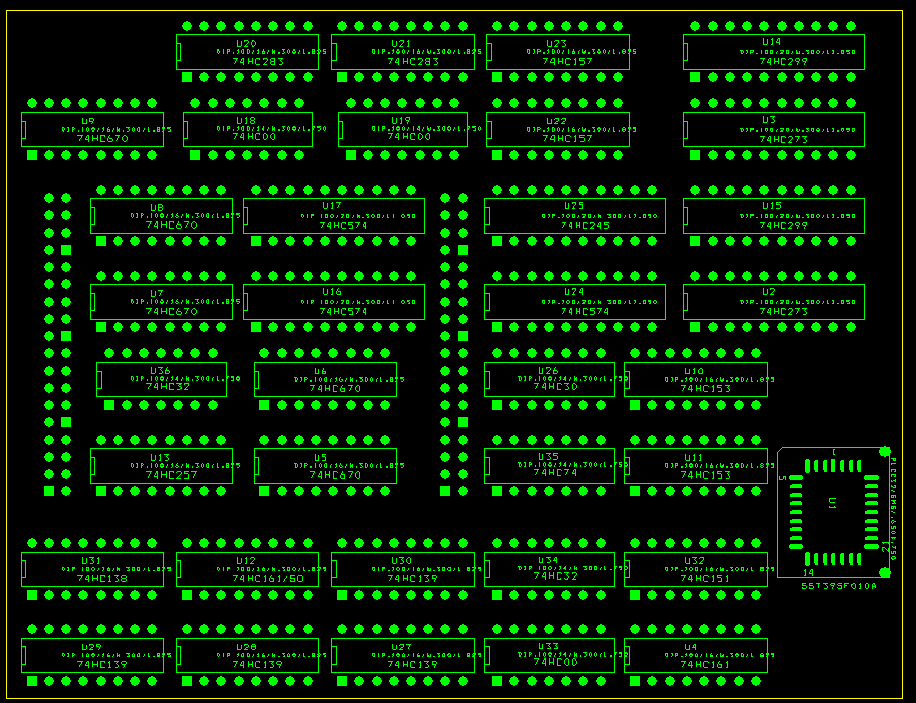A new option was added to the microinstructions, to enable powerful instructions of the form:
MOV 6(R4),R2
(R4 points to a struct. The contents of the 6th field of the struct is copied to R2.) A previous log was updated to show this new microinstructions.
The CPU schematic is now thought to be complete, the new version is in the files section now. The pcb design is also complete:

And here is a picture of the traces (Clicking on a picture will give more details) :

Dimensions of the pcb are 5.2 x 4 inch.
The work will now continue with designing a first version of the main board.
Discussions
Become a Hackaday.io Member
Create an account to leave a comment. Already have an account? Log In.
Hi Marcel !
By overflow indicator, I guess you mean the CY-flag, yes it is synchronized with flipflop U35A and then goes to the microcode address. The zero flag goes off-board to a HC151 multiplexer on the main board, that can select several inputs. The multiplexer output is simply called INPUT, it is synchronized with flipflop U35B and then goes also to the microcode address.
One of the other inputs of the multiplexer is databit0. It can be clocked into mentioned flipflop when a pointer is loaded. This way, microcode can see if upper or lower byte is needed for memory-byte operations.
Yes, microcode can be reprogrammed in place, in the same way as in the #1 Square Inch TTL CPU.
Are you sure? yes | no
Gefeliciteerd! The schematics are a joy to read and I will study them more. It all seems to fall nicely together. Two questions: I see the overflow indicator goes into the microinstruction decoder, but the zero flag doesn't. Is overflow the (only) way to branch? Those parallel flash chips are something I should consider as well. I have the impression you plan to reprogram them in place, through the headers, is that correct?
Are you sure? yes | no